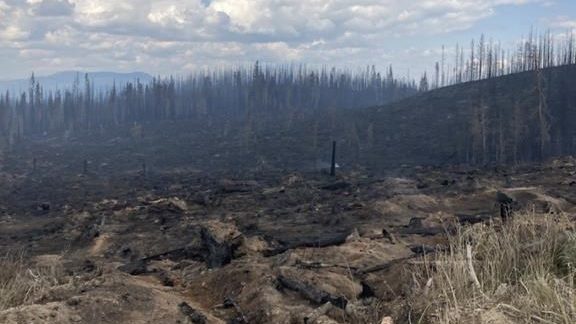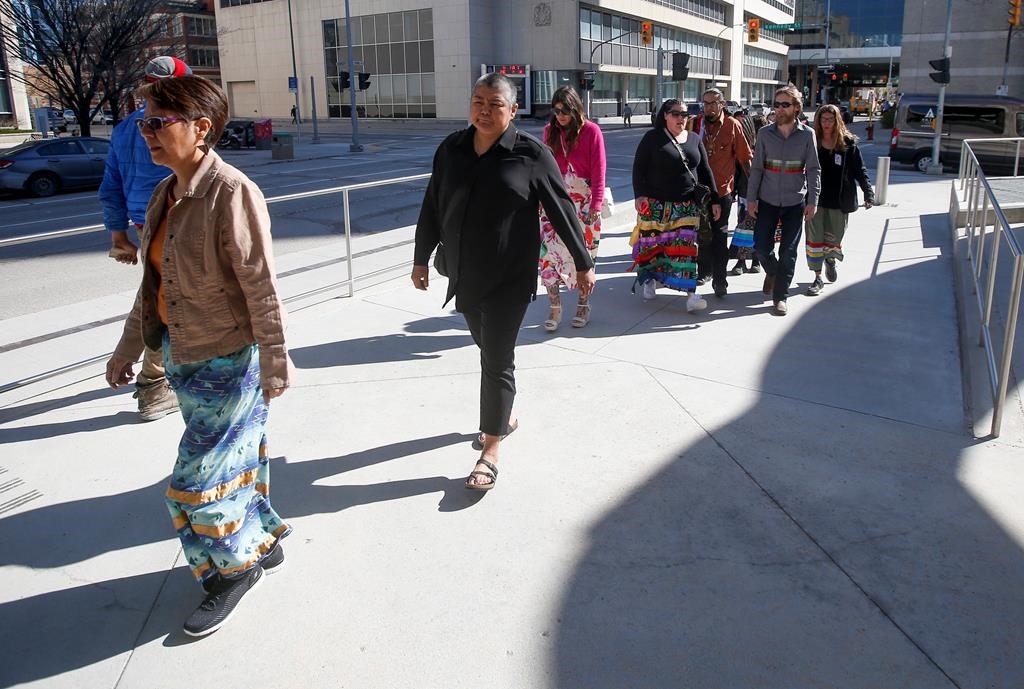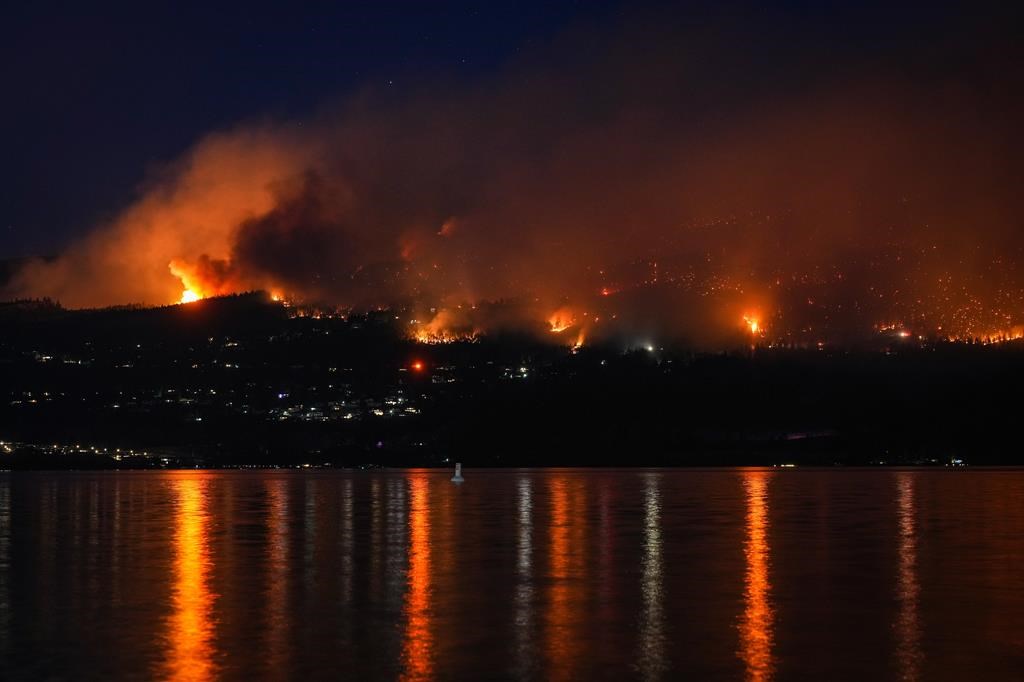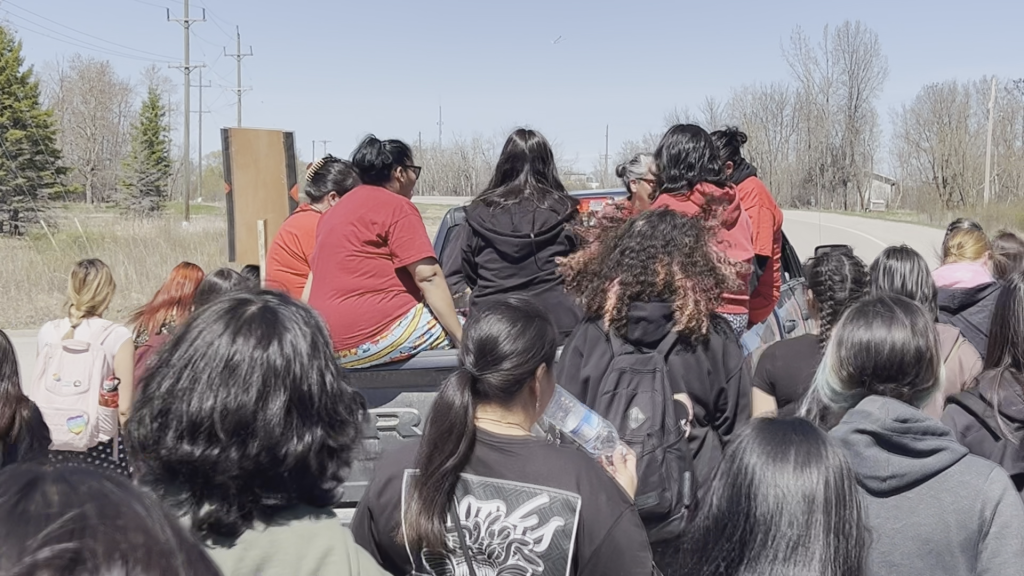Devastating 2023 Canadian wildfire season sets multiple records: feds

Posted August 11, 2023 12:42 pm.
Last Updated August 12, 2023 8:09 am.
The 2023 wildfire season has set multiple records across Canada already this year, the federal government says, as we move into the second half of the summer.
In an update Friday, Michael Norton, the director general of the Northern Forestry Centre at Natural Resources Canada (NRCan), explains as of Aug 10, 5,093 wildfires across Canada have burned over 13 million hectares of land.
This is six times the average land burned, as the 10-year average at this time of year is 4,600 fires with 2 million hectares of land burned.
He adds that wildfire activity has been widespread burning from coast to coast this season.
“This is largely due to drought conditions across the country. … As discussed at the briefing I gave on July 6, this kind of simultaneous fire activity in all regions of the country is virtually unheard of, and is usually more regional, with one side of the country seeing more fire activity than the other over the course of the season. But, that is not what we’ve experienced this season,” he explained.
Norton says NRCan’s modelling, with data from Environment and Climate Change Canada, shows the potential for higher-than-normal fire activity remains across much of Canada in August and September.
“In some regions, rain has helped reduce fire activity to some degree but fires remain very active in places like British Columbia, Northwest Territories, and Yukon. Active evacuations, structural losses, and impacts on transportation and communication infrastructure are unfortunately continuing,” he said.
Related Articles:
-
Lytton proposed class action against railway companies thrown out by BC Supreme Court
-
Canadians flying back from Maui on Air Canada ‘ferry’ flights share wildfire horrors
-
Federal officials to provide wildfire update amid devastating season
In June, Norton explains the historical average for area burned in that month is just under 461,000 hectares. This June, Canada saw 5.2 million hectares burn — more than 10 times the monthly average.
“This June we saw a record for the most area burned in a single day — June 22 — with 531,000 hectares burned in a single day,” Norton continued. “What’s remarkable is not just the spike on the 22nd, or the drastic increase in monthly area burned, but also the fact that it happened during the time when fire activity is normally somewhat lower — Boreal forests are normally greened up.”
Norton goes on to explain that not only is the area burned setting records this fire season, but carbon emissions due to the blazes are also “significant and increasing.”
“Our current preliminary estimates indicate that emissions from this wildfire season now exceed 1 billion tons of carbon dioxide equivalent,” he said.
“Smoke has also been, and continues to be, a major part of the story. From April 1 to August 8, 3,002 Air Quality Alerts have been issued by Environment and Climate Change Canada — that is already close to double the previous record number of alerts issued just two years ago over the entire fire season.”
Norton says the “bottom line” is that the country’s fire season is not over. “It is likely we will experience significantly higher activity for many weeks yet. This season continues to set new records.”
Most of the international firefighting personnel that has come to Canada from overseas is stationed in British Columbia, Norton explains.
“The total to date this year is 4,990 international firefighters and others that have come to support Canada from a total of 12 countries. Assistance from our international partners continues to be important. We remain grateful for their fast response and ongoing hard work,” he said.
“The risks posed by wildfires are real. Firefighting is dangerous work,” Norton said, adding the four deaths of firefighters across Canada during this year’s wildfire season is a “tragic reminder of the risks wildland firefighters face as they work to keep our communities safe.”
‘The science is clear. The root cause is climate change’: federal minister
In a news conference in Metro Vancouver Friday, federal Minister of Energy and Natural Resources Jonathan Wilkinson explains the government recognizes the need to support Canadian communities to adapt to the impacts of climate change and wildfires.
“The federal government is providing $256 million over five years to help equip provinces and territories with specialized tools that they need to fight wildland fires. This has been critical for our counterparts if your essential resources such as vehicles mobile units, avionics upgrades, hoses, pumps, and communication equipment,” he said.
The minister also says that in partnership with multiple levels of government, $400,000 will be provided to the International Association of Fire Fighters (IAFF) to fund a pilot program that will help train firefighters and build wildfire fighting capacity.
“This wildfire season has been historic, with more intense fires in more parts of Canada than ever before. The first priority of this government is the health and safety of Canadians. That is why we are partnering with the IAFF to deliver more firefighters and high-quality training opportunities across Canada. We will continue to work with the partners to expand our wildfire fighting capacity — to protect and preserve Canadian lives and livelihoods,” Wilkinson said.
Wilkinson goes on to say that NRCan has also invested $170 million in the development of a “purpose-built” public satellite system that will monitor fires. Wilkinson believes the program will be launched in 2029.
“It is certainly the case that wildfires have always occurred across Canada. But what is new is the frequency and the intensity. And the science is very clear here. The root cause of this is climate change. That is why this year as wildfire season has been so destructive.
“It is showing us what the future will increasingly look like if we do not take action to reduce emissions. It has shown us the costs and failure to act will bring to our health our environment and our economy and our communities,” Wilkinson said.
–With files from Liza Yuzda








